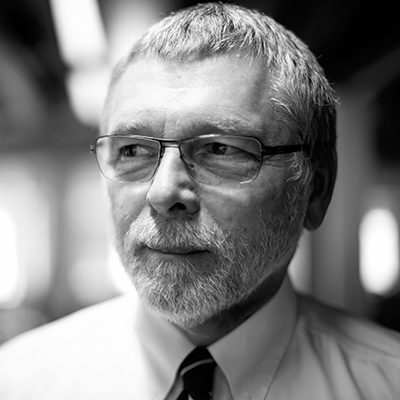Robert Venturi passed away earlier this month. Ian Adamson, former PAYETTE Principal, worked with Venturi early in his career. Read the obituary in The Guardian.
I had the great fortune to work for and with Bob Venturi from October 1981 through March 1992. That was a job I did not search out, but rather, fell into due to a number of unrelated circumstances. I was not particularly a fan of his work but thought I understood and appreciated his reputation at the time based on what I had read. However, all these preconceived notions would be proven wrong over the ensuing years.
At first Bob was a larger than life figure, when he came over to your desk you just hoped you wouldn’t say something stupid and get fired. But the reality was that Bob was relatively easy going for the most part and desk crits could be a lot of fun if he liked you. The sessions were less about direction, more of a dialogue. He would talk endlessly about the project, obscure precedents, what he watched on TV the night before, and the occasional crude joke. Many times the end result was ‘this sucks and I hate it but draw it up and we will make it better tomorrow.’ He loved to iterate the design, over and over again, even in construction, client permitting.
Over time familiarly lead to informality. You always understood he was the boss, but he made the work enjoyable and, ultimately, very rewarding. We got to the point where he would, on occasion, fire me and I would thank him for ending my misery. In the end, while working in small groups, he would tell them he doesn’t fire me anymore because I enjoyed it too much.
What do I remember? Your old heroes from college went out the window, modernism was dead, mannerism uber alles. Lutyens, Asplund, Voysey were some of your new heroes, you had to retrain yourself to think differently. Nothing lines up, odd numbers are better than even, the 1/3rd 2/3rd rule and, of course, the Bob Venturi window and people. Bob always complained that my people looked like they had just had a skiing accident. I still draw them the same way to this day, sans crutches.
Bob had lots of rules for the way you produced the drawings. He saw the drawings as just as important as the building, given his history at the time, the drawing were often the only tangible result of many projects. The design drawings were usually produced using No.2 Ticonderoga pencils, producing wavy lines as you drew the pencil along the straight edge, and the intersection of two lines always ended in a cross. Also we made endless models, and produced mock-ups that were saved and catalogued. We designed and had fabricated tables, chairs, light fixtures, even art work for various projects. I even got to sponge paint two rooms at a Princeton University project as part of my job. Nothing seemed out of the ordinary or too impossible for Bob. No matter how crazy you thought it was, we always found a way to make it happen.
At times, it was as one might imagine working in Santa’s workshop. Mr. and Mrs. Claus, Bob and Denise, and all the elves working day and night to make the magic a reality. And magic it was, an architectural practice driven by an intellectual passion that knew no bounds. A philosophy and attitude about design that worked on many levels for the users, the clients and ultimately the buildings place in the history of architecture. Buildings that did so much more than just satisfy the users requirements. It’s what I liked to call ‘second glance architecture’ – a building that makes you stop and take a second look. It’s the way the unexpected multiple aspects of the building speaks to you, how it sits in its context and talks to its neighbors (or not) and through its iconography referring you to another time and place.
For me, Bob was the ultimate mentor. He taught me so much about architecture, design, and even life. He probably knew more about the history of architecture than anyone as a practicing architect. Yet as the smartest guy in the room he wanted to be the bad boy, turning the design world on its head. And that he did.
For those of us who knew Bob he will be sorely missed. His humility, grace, and great sense of humor along with his unceasing energy, and curiosity about design and the messy vitality of the built environment produced an unbelievable body of work, buildings, drawings, decorative arts and writings. But one of the most admirable qualities that Bob shared with Denise was their insistence on sharing credit with all the various elves that helped along the way. They understood it took a village, and I am glad and forever grateful that for a few years I had the opportunity to work in that village.


